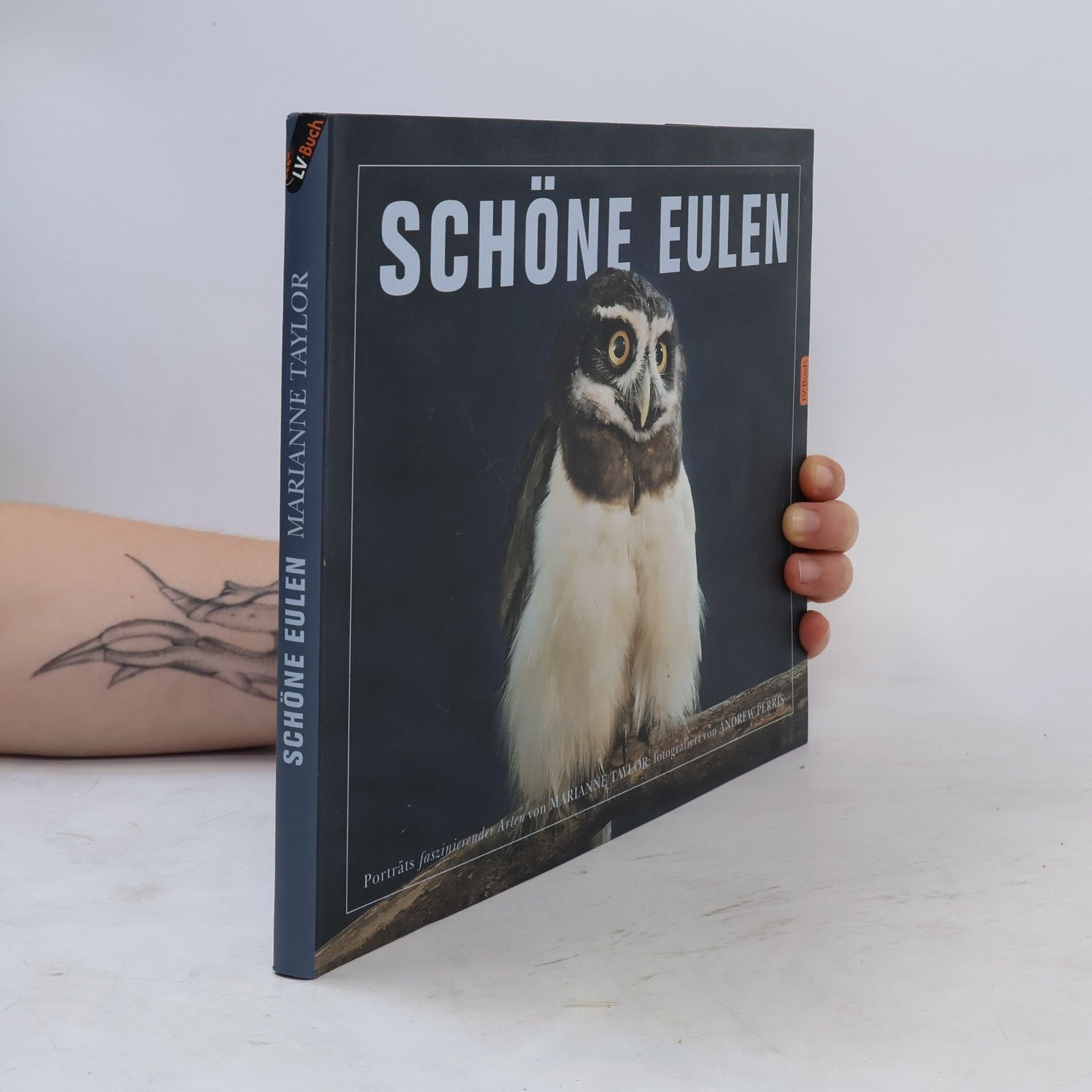Die stille, erhabene Schönheit von Eulen ist legendär – quer durch unsere Kulturgeschichte sind sie Symbole für Weisheit und Wachsamkeit, ob als Attribut der Göttin Athene in der griechischen Mythologie, als stille Beraterin für das Aschenbrödel in der tschechischen Märchenfassung und nicht zu vergessen als vertrauensvoller Nachrichtenüberbringer im Bestseller Harry Potter. „Schöne Eulen“ stellt nun die spektakulärsten und schönsten Rassen vor, von der Streifen-Ohreule zur Äthiopischen Waldohr-Eule, von der Sunda-Zwergeule bis zur Kaninchen-Eule.
Marianne Taylor Bücher






Welche Lebensformen würden Aliens mitnehmen, um in einem Museum das Leben auf der Erde zu zeigen? Anhand welcher Arten ließe sich am besten erklären, was Leben ist und wie es funktioniert? Marianne Taylor versteht es, komplexe Sachverhalte der Evolution transparent zu machen und räumt auf mit so manchem landläufigen Halbwissen über die Entwicklung von Arten und Populationen. Ein Sachbuch auf dem neuesten Stand der Wissenschaft, das komplexe Zusammenhänge mithilfe von Infografiken verständlich macht und einen faszinierenden Einblick in die Entwicklung des Lebens auf unserem Planeten gibt.
Was Tiere denken
Intelligenz und Emotion in der Wildnis
Wir fangen gerade erst an, zu begreifen, dass das Gehirn von Tieren ähnlich komplex ist wie unser eigenes. Die Warnrufe von Präriehunden etwa sind nicht nur hektische Pfeiftöne, sie übermitteln damit zusammenhängende Nachrichten. Gorillas nutzen Zeichensprache, um vergangene Ereignisse zu schildern – wissen sie also, was heute, gestern und morgen ist? Eine Ameise, der man einen blauen Farbtupfer auf dem Kopf angebracht hat, will diesen loswerden, sobald sie in einen Spiegel blickt, ein Beweis für ihr Ich-Bewusstsein, das Menschen erst ab dem zweiten Lebensjahr entwickeln. Dieses Buch präsentiert 60 Tierarten, ihre bemerkenswerten kognitiven Fähigkeiten, ihre Gefühle und ihre teils ausgefeilte Kommunikation. Mit über 80 beeindruckenden Fotos von renommierten Naturfotografen. Tauchen Sie ein in die faszinierende Tierwelt unseres Planeten!
Warum entscheiden sich Vögel, in Gemeinschaft zu brüten und ihre Jungen aufzuziehen? Wie funktioniert das Miteinander von Tausenden Nachbarn auf engstem Raum? Dieses Buch erkundet Vogelgemeinschaften auf der ganzen Welt, vom tropischen Regenwald über hochhausartige Kolonien an Klippen bis zu den Dächern unserer Städte. Unterhaltsam und packend erzählt Marianne Taylor vom Zusammenleben verschiedenster Vogelarten. Spektakuläre Fotos sowie Karten und Graphiken geben einen Einblick in das außergewöhnliche Sozialverhalten der gefiederten „Großstädter“.
RSPB British Birds of Prey
- 224 Seiten
- 8 Lesestunden
This book is a celebration of British raptors (including owls), following their fortunes as British breeding birds from historical times to the present day and illustrated with 200 stunning colour photographs.
A compact, lightweight and informative guide to 310 of the most common birds found in the UK. RSPB Pocket Guide to British Birds is a compact, lightweight and informative field guide, featuring 310 bird species regularly seen in the UK. Species are illustrated in all distinct plumage forms likely to be observed in the wild by renowned bird artist Stephen Message, and a detailed distribution map for the British Isles is also provided. Concise text covers appearance, behaviour and voice – focusing on key identification points – and also outlines where you will find the species, describes its seasonal movements and includes the latest UK population data. Finally, confusion species are cross-referenced, with their most important and easily noted differences from the subject species described. A comprehensive introduction provides a guide on how and where to find birds, and how to make the most useful and rewarding observations for newcomers to birdwatching. Uniquely, this guide also provides images and descriptions for not only a selection of rarer visitors, but also for a range of domestic species and certain commonly observed aberrant forms of more familiar birds, all of which are omitted from most field guides but can cause great confusion for beginners when encountered in the wild.
A beautifully illustrated exploration of the ways birds cohabitFeaturing dramatic and delightful wild bird colonies and communities, How Birds Live Together offers a broad overview of social living in the avian world. From long-established seabird colonies that use the same cliffs for generations to the fast-shifting dynamics of flock formation, leading wildlife writer Marianne Taylor explores the different ways birds choose to dwell together.Through fascinating text, color photos, maps, and other graphics, Taylor examines the advantages of avian sociality and social breeding. Chapters provide detailed information on diverse types of bird colonies, including those species that construct single-family nests close together in trees; those that share large, communal nests housing multiple families; those that nest in tunnels dug into the earth; those that form exposed colonies on open ground and defend them collectively, relying on ferocious aggression; those that live communally on human-made structures in towns and cities; and more. Taylor discusses the challenges, benefits, hazards, and social dynamics of each style of living, and features a wealth of species as examples.Showcasing colonies from the edge of Scotland and the tropical delta of the Everglades to the Namib Desert in Africa, How Birds Live Together gives bird enthusiasts a vivid understanding of avian social communities.
Rspb Id Spotlight - Garden Birds
- 12 Seiten
- 1 Lesestunde
A reliable, attractive fold-out identification chart illustrating 50 of Britain's most familiar and popular garden bird species.
Rspb Id Spotlight - Coastal Birds
- 12 Seiten
- 1 Lesestunde
A reliable, attractive fold-out identification chart illustrating 50 of Britain's coastal bird species.
Rspb Id Spotlight - Wetland Birds
- 12 Seiten
- 1 Lesestunde
A reliable, attractive fold-out identification chart illustrating 49 of Britain's wetland bird species.